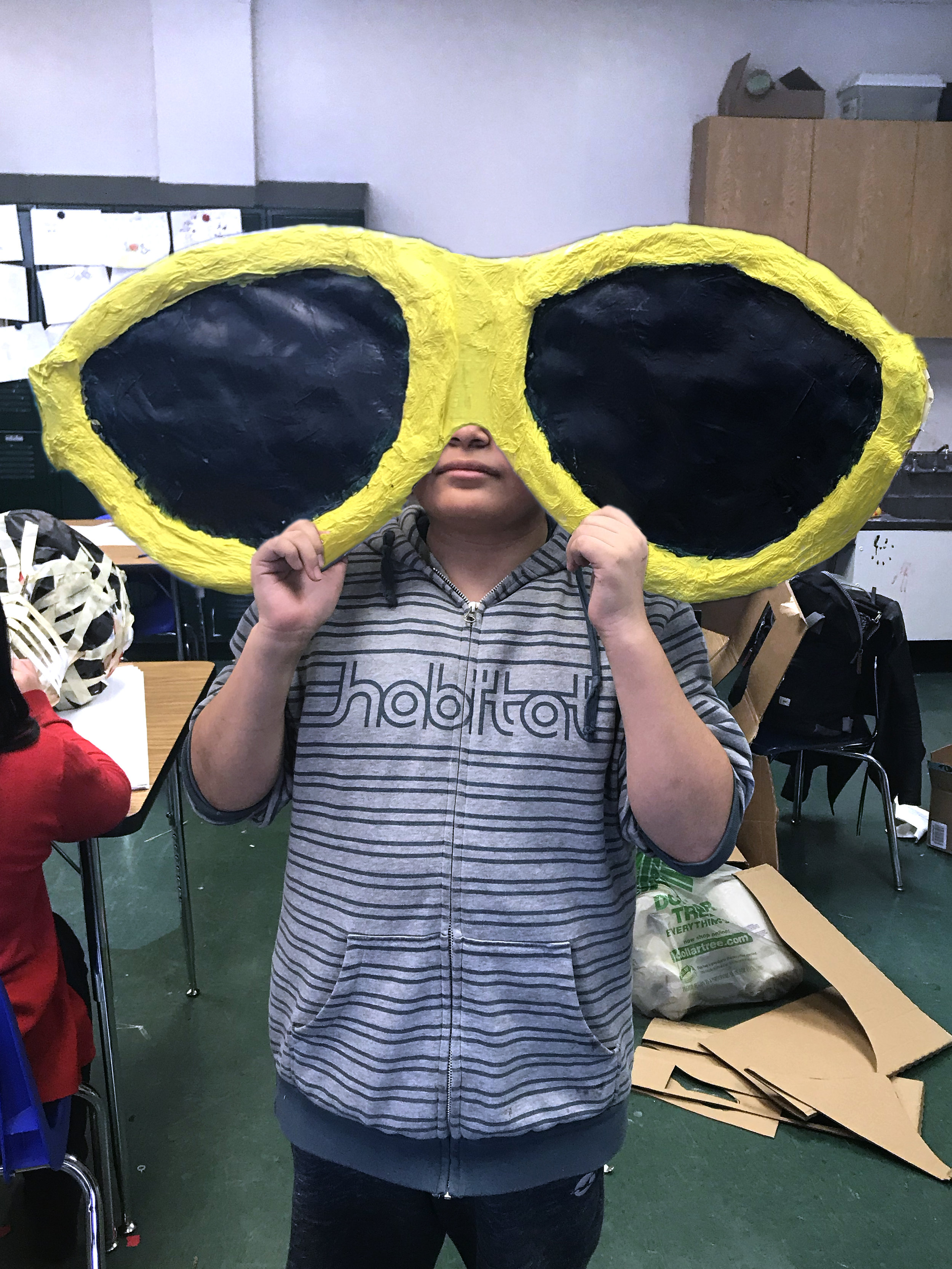Sculpture Classes Offer Multiple Perspectives
Sculpture Classes Offer Multiple Perspectives
Sculpture is meant to be viewed from all angles. This creates unique challenges for both the artist and the audience. This spring, after-school programs at PS/MS 278 in Manhattan and MS 254 in The Bronx challenged students to expand their definition of what sculpture looks like.
Self-portrait sculptures inspired by Marisol
People are complicated. To paraphrase Walt Whitman, we contradict ourselves, we contain multitudes. How people see us depends a lot on who’s looking. Middle school students in a CAW after-school program at PS/MS 278 in Inwood experimented with this idea by creating self-portraits inspired by New York pop artist Marisol, who combined wooden blocks, found objects and photographs to created playful and perceptive portraits of celebrities and ordinary people.
Teaching Artist Brandi Martin-Yu, who often shares images of the curbside treasures she finds on her Instagram account, collected discarded building blocks for this project. Her students then created assemblages which they embellished with black and white photos of themselves and found objects, such as street maps and sheet music, that offer clues to their personality.
“People can look you in the eye or they can look at your profile and see something different. Your friends and family see different sides of your personality as well. Nobody is just one thing but many. The challenge here was to create a self-portrait that looks like the artist but also suggests some of the mystery of their inner life.”
People are complex. Inspired by the work of pop artist Marisol, students constructed self portraits out of building blocks, photographs, collage, and found objects.
more complex
Nylon stockings stretched over wire coat hangers inspired by the work of Jean Arp
At MS 254, students mastered the basics techniques of building traditional clay objects such as pinch pots, coil pots, and bas relief tile boxes, before progressing to more complex challenges.
CAW Teaching Artist Liza Cucco introduced her students to the abstract curvilinear sculptures of Jean Arp. Students emulated Arp’s style by stretching nylon stockings over curving armatures made from coat hangers and florist foam. They then coated their sculptures with gesso before pain
From 3D to 2D back to 3D:
An MS 254 student with a scale drawing of his headphone many times larger than life.
One of the challenges of sculpture is learning how to think in three dimensions. A project inspired by Claes Oldenberg’s gigantic sculptures of everyday objects offered students a chance to try out several methods to visualize their finished piece before they committed to working on it, including sketching, drawing up scale plans, and using a model.
Students used basic math to scale up real objects onto paper before constructing their giant sculptures from cardboard, newspaper, masking tape, glue and paint. The large scale of the project necessitated teamwork, as well as patience. Students had to think ingenious ways of creating the illusion of volume.
The ginormous sculptures included a pair of sunglasses, a deck of cards, a lightbulb, and a pair of headphones. Check them out in the gallery show below.
These Creative Art Works programs are supported, in part, by public funds from the New York City Department of Cultural Affairs and the Cultural After-School Adventures (CASA) Initiative in partnership with the City Council and Council Members Mark Levine (PSMS 278) and Ritchie Torres (MS 254).











